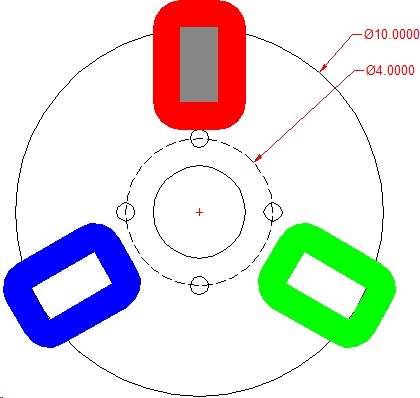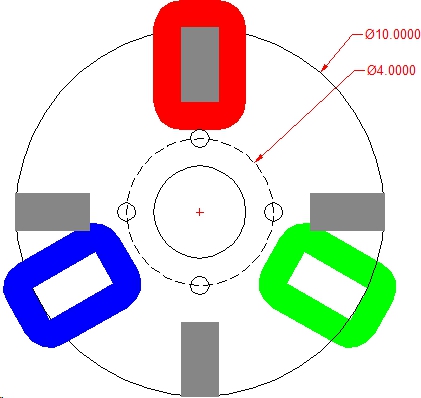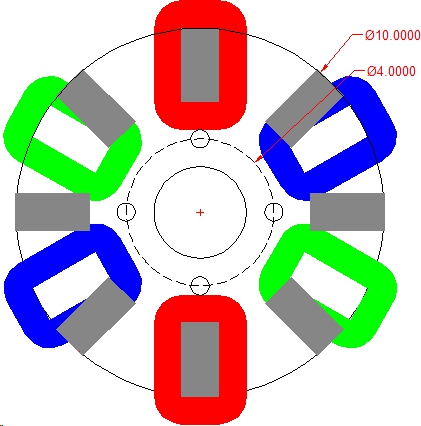So if I wanted to build a simple three phase design doing it with the least coils and magnets as possible, which from the list would be the best combination for running smooth? And is there another combination I am missing?
Tall Paul,
For a three phase design you need a minimum of three coils or one coil for each phase. You can do this with one magnet that travels 120 degrees to each coil but this is a very inefficient design.

This image shows a simple three phase design with phases shown as red, green and blue. A single magnet is centered over the red phase. There's a lot of wasted space here and the magnet needs to rotate 120 degrees from coil to coil. Not a good design.

This image shows the same three coil layout but now with four magnets. The rotational amount the magnets travel from coil to coil is reduced and this in turn increases the output of the alternator.
There is still a lot of empty space between the coils and between the magnets. If you fill this space with additional coils and magnets you further increase the output.

This image shows the same layout as above but with the addition of 3 more coils and 4 more magnets. This layout is now using all of the empty space available and is approaching the limit of coils and magnets that will fit the given rotor diameter. There are now two coils working in each of the three phases.
There are many ways to approach the coil/magnet geometry from single phase (equal number of coils to magnets) to polyphase of 2,3,4 or more phases. What you need to accomplish is that each phase sees the same geometry at any given point of rotation. If you look at the six coil design you'll see the 12 o'clock and 6 o'clock coil have the magnet centered.
Use a compass and protractor or a CAD program to draw out different design geometry and this will help you understand the variables. Also note the north - south - north orientation of the magnets. If your phase sees all the same pole (either north or south) then the coils will need to be wound all in the same direction. If you design has a phase seeing both north and south poles then your coils winding will need to be reversed. Example is cw for a north pole and ccw for a south pole.
Hope this helps.
Rgds,
Craig